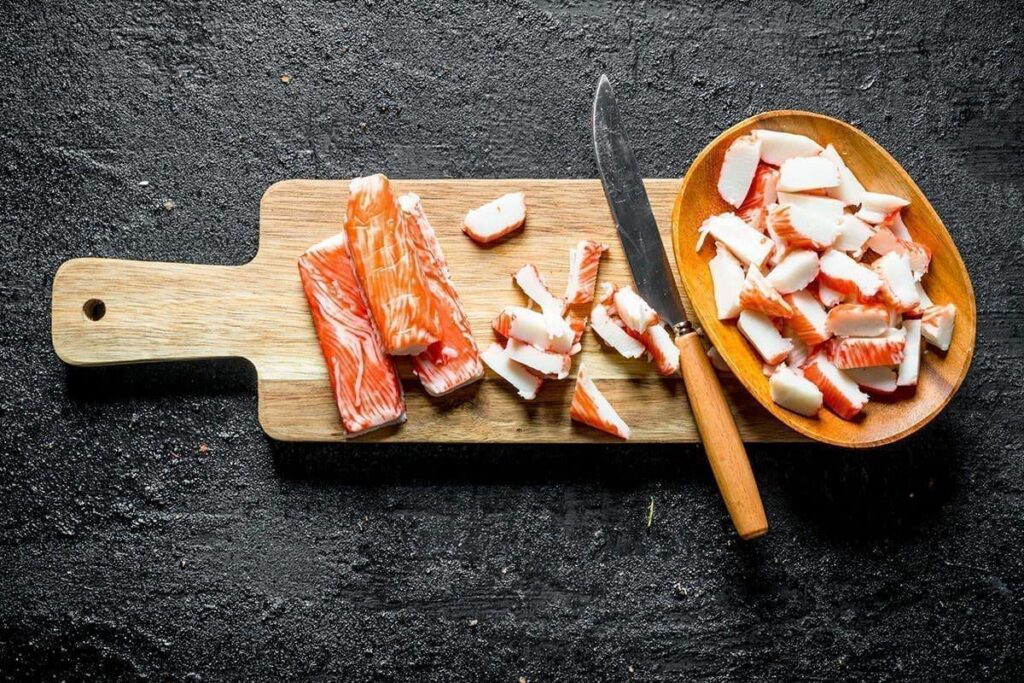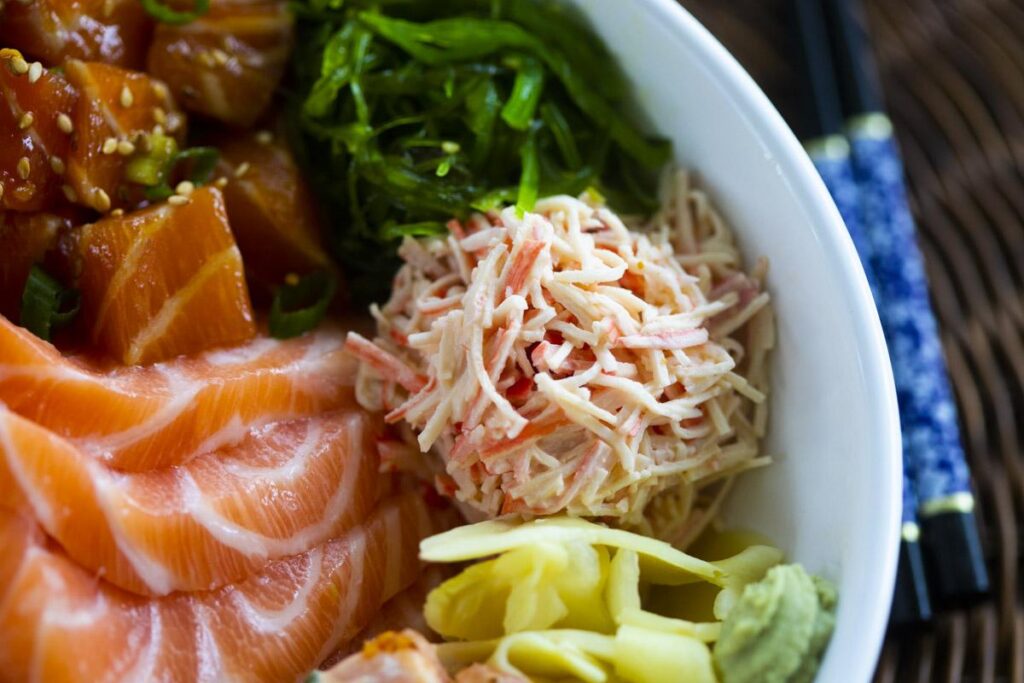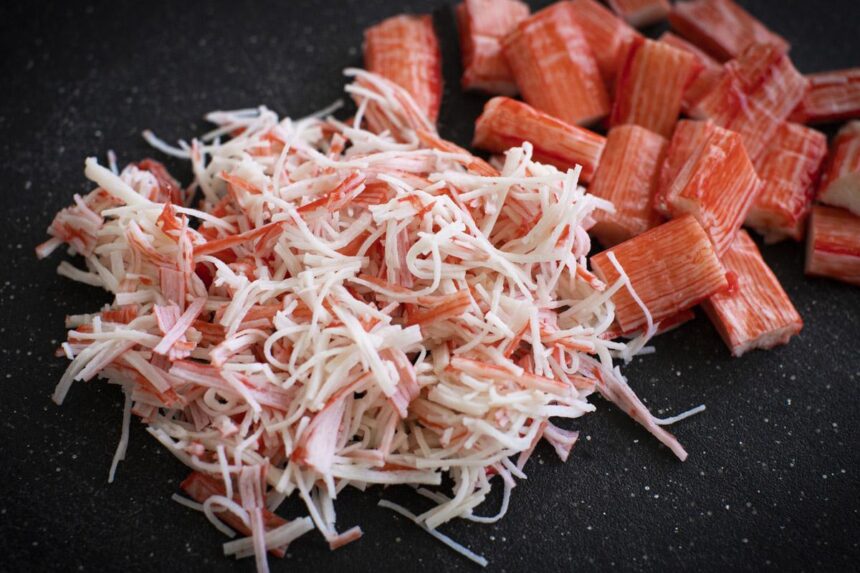Introduction
Kanikama, commonly known as imitation crab, has gained significant popularity across the globe, especially in sushi bars and seafood dishes. Often used as a cost-effective alternative to real crab, kanikama is made from fish and flavored to resemble the taste and texture of crab meat. This article delves into the history, production, culinary applications, nutritional aspects, and cultural significance of kanikama, highlighting why this unique ingredient continues to capture the hearts and palates of food enthusiasts everywhere.
The History
Origins of Imitation Crab
The concept of imitation seafood can be traced back to Japan in the early 1970s, although the practice of creating alternative seafood products has older roots. The original kanikama was developed as a way to utilize surimi, a Japanese word that means “ground meat.” Surimi has been a staple in Japanese cuisine for centuries, often made from fish like pollock, which was finely minced and mixed with various seasonings.
The rise of kanikama can be attributed to the need for affordable seafood options, especially in a post-war Japan where economic constraints made real crab less accessible. By the late 20th century, kanikama had transcended its Japanese origins, finding its way into global markets and becoming a staple in various cuisines.
Evolution in the West
As sushi gained popularity in Western countries during the 1980s and 1990s, kanikama made its debut in American sushi restaurants. Its affordability, versatility, and resemblance to real crab meat made it a popular choice for sushi rolls, salads, and seafood dishes. Today, it is commonly found in grocery stores and restaurants across North America and Europe, often used in dishes like California rolls and seafood salads.
Production

Ingredients and Process
It is primarily made from surimi, which is usually derived from white fish such as Alaskan pollock or Pacific whiting. The production process begins with catching the fish, which is then cleaned, filleted, and minced. The minced fish is washed to remove any unwanted flavors and to achieve a neutral taste.
Surimi Preparation: The washed fish is then blended with various ingredients, including starch, egg whites, and seasonings. These additions help to bind the mixture and enhance its flavor. The surimi is then cooked to form a gel-like consistency.
Shaping and Coloring: The cooked surimi is shaped into crab-like sticks or chunks and colored to resemble the appearance of crab meat. Natural and artificial coloring agents are often used, with the most common being a combination of red and orange hues to mimic the look of cooked crab.
Packaging and Distribution: After shaping, it is either vacuum-packed or frozen to maintain freshness. It is then distributed to grocery stores, restaurants, and sushi bars worldwide.
Quality Control
Quality control is essential in the production of kanikama to ensure that the product meets safety standards and maintains its desired taste and texture. Regular testing for contaminants, freshness, and flavor profiles is conducted throughout the production process. This focus on quality has helped it gain a reputation as a safe and reliable seafood alternative.
Culinary Applications
Kanikama’s versatility allows it to be used in various culinary applications, making it a favorite among chefs and home cooks alike. Here are some of the most popular ways to enjoy kanikama:
Sushi and Sashimi
It is a staple ingredient in many sushi rolls, particularly the California roll, which combines kanikama, avocado, and cucumber wrapped in sushi rice and nori (seaweed). Its mild flavor and pleasant texture make it an excellent filling for sushi, providing a crab-like taste without the hefty price tag.
Salads and Cold Dishes
It can be easily incorporated into salads, adding a seafood element to dishes like seafood salad or pasta salad. It pairs well with creamy dressings, making it a popular choice for cold appetizers. The texture of it provides a delightful contrast to crisp vegetables and other ingredients.
Soups and Hot Dishes
In addition to cold applications, it can be used in soups and hot dishes. It can be added to miso soup, seafood chowders, or stir-fried dishes, where it absorbs the flavors of the broth or sauce while retaining its unique texture.
Snacks and Finger Foods
It is also enjoyed as a snack or finger food. It can be served as part of a seafood platter, alongside dipping sauces like soy sauce, wasabi, or spicy mayo. It’s easy-to-eat format makes it a popular choice for appetizers at parties and gatherings.
Nutritional Aspects

It is often viewed as a healthier alternative to traditional crab meat, primarily due to its lower cost and lower fat content. Here’s a closer look at its nutritional profile:
Macronutrients
A typical serving of it (approximately 3 ounces) contains:
Calories: About 80-100
Protein: 15-18 grams
Fat: 1-2 grams
Carbohydrates: 5-10 grams
The protein content makes it a good source of lean protein, while its low-fat content appeals to health-conscious consumers.
Vitamins and Minerals
It is a source of several essential vitamins and minerals, including:
Vitamin B12: Important for nerve function and the production of DNA and red blood cells.
Selenium: An antioxidant that plays a role in metabolism and thyroid function.
Phosphorus: Vital for maintaining healthy bones and teeth.
While it is not as nutrient-dense as real crab meat, it still offers a healthy alternative, especially for those who may not have access to fresh seafood.
Considerations
While it has many nutritional benefits, it’s essential to consider its ingredients. Some varieties may contain additives, preservatives, or high levels of sodium. Consumers should check labels to ensure they choose high-quality with minimal additives.
Cultural Significance
In Japanese Cuisine
It holds a special place in Japanese cuisine, where it is often celebrated for its versatility and accessibility. It is not only a staple in sushi but also a common ingredient in traditional Japanese dishes such as chawanmushi (savory steamed egg custard) and tempura. Its affordability has made it accessible to a broader audience, allowing more people to enjoy seafood flavors without breaking the bank.
Global Influence
As it spread beyond Japan, it became a key ingredient in various international cuisines. In the United States, it plays a vital role in popular dishes like crab cakes and seafood salads. The introduction of it to Western culinary practices demonstrates how food can transcend cultural boundaries, evolving to fit new contexts and preferences.
Environmental Impact
The rise of it can also be viewed through an environmental lens. With concerns over overfishing and the sustainability of seafood sources, it provides a more sustainable option for seafood lovers. By using fish that are plentiful and farmed responsibly, it offers a way for consumers to enjoy seafood while minimizing their ecological footprint.
The Future

Innovations in Production
As demand for it continues to grow, the industry is exploring innovative production methods. Advances in food technology may lead to improved flavor profiles, textures, and even the development of plant-based or vegan alternatives. These innovations could attract a broader audience, including those with dietary restrictions or ethical concerns regarding seafood consumption.
Expanding Culinary Uses
The versatility of it opens the door for creative culinary applications. Chefs and home cooks alike are experimenting with kanikama in new and exciting ways, from fusion dishes to gourmet preparations. As the ingredient gains popularity, we may see an increase in specialized recipes and gourmet offerings featuring kanikama.
Market Trends
The growing interest in health-conscious eating and sustainable seafood alternatives positions kanikama favorably in the market. As consumers become more aware of the environmental impact of their food choices, kanikama’s status as a sustainable seafood option is likely to enhance its appeal.
Conclusion
It has carved out a unique niche in the world of culinary delights, blending affordability with versatility and flavor. From its origins in Japan to its widespread acceptance in global cuisines, it stands as a testament to the power of innovation in food production. As consumers increasingly seek healthier and more sustainable food options,it will likely continue to thrive, evolving alongside culinary trends and preferences.
With its rich history, diverse applications, and nutritional benefits, it is more than just imitation crab; it represents a journey of culinary creativity and cultural exchange. As we look to the future, it promises to remain a beloved ingredient in kitchens and restaurants around the world, appealing to both traditionalists and modern food enthusiasts alike. Whether enjoyed in sushi, salads, or creative new dishes, it continues to prove that deliciousness knows no bounds.



